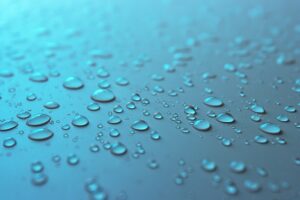Introduction
Desktop wallpaper, often referred to as the desktop background, is an image or design that adorns the background of a computer screen. It is one of the most personalizable features of a PC, allowing users to express their individuality, mood, or interests through visual aesthetics. This seemingly simple feature plays a significant role in user experience, impacting productivity, creativity, and overall enjoyment of using a computer.Desktop Wallpaper for PC
Types of Desktop Wallpapers
- Static Wallpapers:
- Photographs: Nature scenes, cityscapes, portraits, and macro photography are popular choices. High-resolution photographs can make the desktop visually stunning.
- Art and Illustrations: Digital art, paintings, and illustrations can add a creative touch to the desktop. These can range from abstract designs to detailed, realistic artwork.
- Patterns and Textures: Geometric patterns, gradients, and textured designs offer a more subtle background that doesn’t distract from desktop icons and widgets.
- Dynamic Wallpapers:
- Slideshow Wallpapers: A collection of images that change at regular intervals, providing variety without user intervention.
- Live Wallpapers: Animated backgrounds that can range from subtle movements to complex animations, often using minimal system resources.
- Interactive Wallpapers:
- Widgets and Gadgets: Some wallpapers integrate with widgets, providing live updates and interactive elements like weather forecasts, clocks, and calendars.Desktop Wallpaper for PC
Customization and Personalization
The ability to customize desktop wallpaper is a key feature for many users. Options for personalization include:
- Choosing Images: Users can select images from their personal photo collections or download them from the internet.
- Resolution and Fit: Ensuring the wallpaper fits the screen resolution correctly to avoid distortion. Options include stretch, fill, fit, tile, and center.
- Color Matching: Many operating systems allow users to pick a color scheme that complements the wallpaper, creating a cohesive
 look.
look.
Sources for Desktop Wallpapers
- Online Resources: Websites like Unsplash, Pexels, and Wallpaper Abyss offer a vast array of high-quality wallpapers for free.
- Wallpaper Apps: Applications like Wallpaper Engine on Steam provide dynamic and interactive wallpapers with extensive libraries.
- Creative Commons and Public Domain: Images available under Creative Commons licenses or in the public domain can be used freely.
Impact on User Experience
- Aesthetics and Mood: A visually appealing wallpaper can enhance the user’s mood and make using the computer a more enjoyable experience.
- Productivity: Clean, minimalist wallpapers can help reduce visual clutter and improve focus.
- Customization and Ownership: Personalized wallpapers give users a sense of ownership over their device, making it feel more like their own.
Technical Considerations
- Resolution and Aspect Ratio: Matching the wallpaper to the screen’s resolution and aspect ratio is crucial for optimal display quality.
- System Performance: While static wallpapers use minimal resources, live and dynamic wallpapers may impact system performance, especially on less powerful hardware.
- File Format: Common formats include JPEG and PNG for static images, and GIF, MP4, or proprietary formats for animated wallpapers.
Conclusion
Desktop wallpaper for PCs is more than just a background image; it’s a form of self-expression and a tool that can enhance the user experience. Whether through breathtaking photography, dynamic animations, or interactive elements, the right wallpaper can transform a desktop into a personalized workspace that reflects the user’s tastes and preferences.
